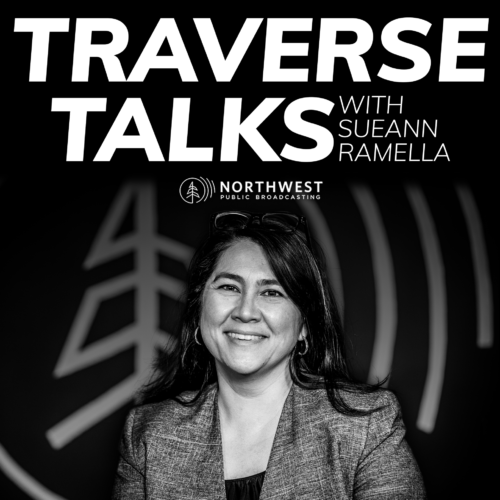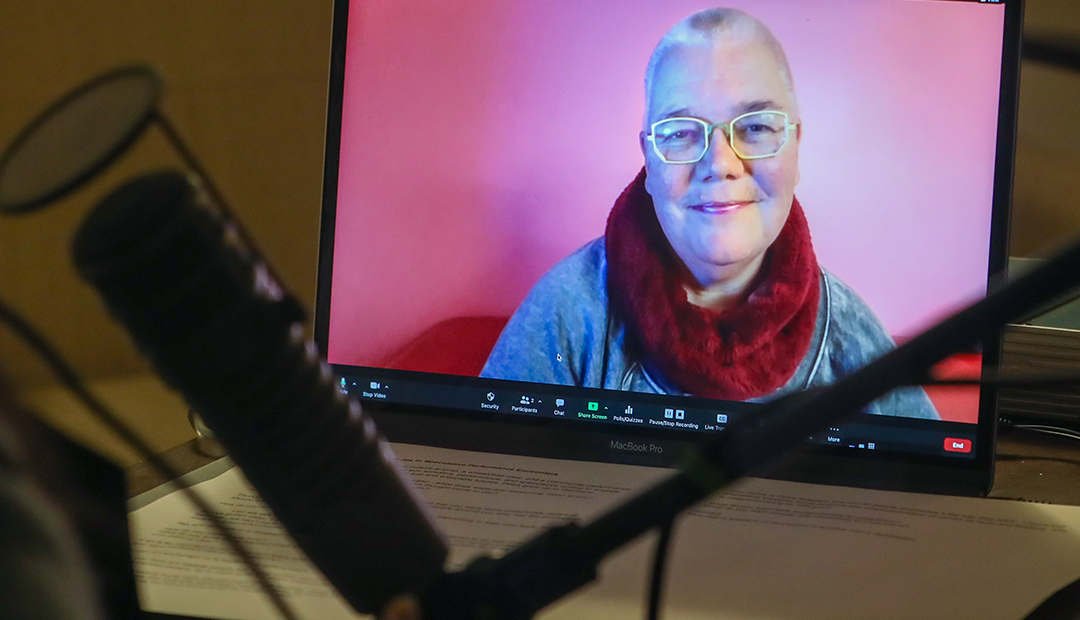
How Do We Experience The World Around Us? ‘Traverse Talks’ Episode 32 – With Petra Kuppers
Petra Kuppers holds many titles: disability culture activist, community performance artist, disabled woman, academic and writer, among more. She’s written several books, primarily centered on disabled artists and their experiences and reception. In this episode of Traverse Talks with Sueann Ramella, Petra breaks down her newest book, Eco Soma: Pain and Joy in Speculative Performance Encounters, and how these pieces of Eco and Soma tie in to disability culture, as well as how they can be used, seen and appreciated by able-bodied people.
SUBSCRIBE: Spotify / Apple Podcasts / NPR One / YouTube
Listen
Conversation Highlights:
Giving Thanks To An Interconnected World:
Sueann Ramella: Oh lovely. Well, I think that kind of falls into your book, “Eco Soma: Pain and Joy in Speculative Performance Encounters.” Please describe for our listener what Eco Soma is.
Petra Kuppers: Eco Soma is so many things, but one of the core things that I try to capture in Eco Soma is the deliciousness of being involved in the world, right? So in Eco Soma, I’m trying to pay attention to the Soma. This is a word that many of us don’t use on a regular basis. It’s a somatic sensing, a feeling inside ourselves. The way that we are holding ourselves, feeling ourselves. The way that we have sensations that we can’t necessarily immediately verbalize. The kind of somatic experience of the world. And then there’s the word eco, you know, this environment, the enworldedness, the fact that we’re surrounded by world in so many ways. And putting those two together is really exciting to me, because there always stays a gap. You know, here’s eco and here’s soma. I’m not just talking about ecosomatics. I’m not talking about one new word. I’m talking about Eco Soma. These two concepts are in play with one another. And I’ll give you an example, right? So right next to me here, it’s a very comfortable blanket and it’s a teal-colored blanket. It’s very soft, the kind of blankets that probably many of us have around our houses. I can lean into this blanket and I can feel it against my skin. I can wrap myself in it. I can feel its warmth. And it holds my body and it makes me feel held and cozy. At the same time, [I’m] also aware that this blanket comes from something that’s quite alien to me. The blanket that I’m holding is, in the end, a plastic blanket, right? These very comfy fleece blankets are plastic. They come from material, organic material, that’s been under deep, deep pressure for so many years, for eons of years, and then got transformed into oil and then got transformed into plastics. Now all these mechanisms are interesting to think about as I’m experiencing the comfort of the blanket. I’m also thinking about what happens when you wash this blanket. And when you wash that blanket, these little fibers come out of fleece, right? We know that, right? We know that our fleece materials create all these little fibers that we can try to capture in our washing machines, but they’re hard to capture and they will go down into the waterways and they will infest fish and the insides of fish. So as I am holding this blanket, I’m experiencing this comfort. I’m thinking about the fish. I’m thinking about the labor practices that bring this blanket to me that make these blankets so affordable. I think about the materials, where the blanket comes from. All of that together is for me an Eco Soma inquiry. Not to alienate me from the blanket, right? That’s not really quite the point, but to be aware of what it means to be comfortable in the world, to be held and warm and how that connects me as an interdependent creature with so many aspects of the material world.
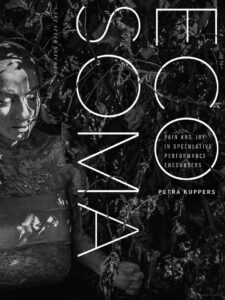
The cover of Petra’s new book, Eco Soma: Pain and Joy in Speculative Performance Encounters.
Sueann: Well, Petra, you’re asking us to think very deeply and connectedly.
Petra: Let’s think about it for ourselves. What are you sitting on right now? Listeners, what are you sitting on? Maybe you’re sitting in a car right now. Maybe you’re sitting at home in a chair. Like, what is the material that is holding you right now? What if you just take a minute to become aware of what it is that supports you and where does it come from? Maybe it’s leather, maybe it’s cotton. What are the sociocultural histories of cotton? What are the sociocultural histories of petrochemicals? What are the costs of cars? We’re just becoming aware of that and just sensing into it, feeling it literally hold our sit bones, feel it against our spine. And we’re just breathing into that and becoming aware of that network, the interdependent web, the Eco Soma web that we are part of and that we influence and give thanks for that moment. In the paying attention, we’re also giving thanks. That’s a really important part for me of this. That we take the joy, we take the pain, we take the thanks and the grace and the being held in this world. So it causes us to take actions and make choices that are kind to the world and kind to ourselves. But it also means that we’re just honoring where we are and what is affordable to us.
Sueann: Thank you for helping me out with that thought because, in my mind, I was immediately going to guilt, feel guilty for having these things and for loving the fuzzy blankets at my home, but feeling guilty for what it is doing. But when I give thanks, I appreciate it more. And I feel as if I would take care of it more.
Pain And Kindness:
Sueann: Oh, pain, Petra, you have written about pain in your life. How do you manage pain or accept pain? How do you deal with it?
Petra: Often when, when pain is very intense, I either move very slowly – I write in the book about moving under one of these blankets. I use – it’s actually exactly the same blanket that I was just touching earlier. I move under this blanket like an amoeba and just left the tiniest, tiniest movements of my fingers influence the shape of the blanket. And so there’s this sense of human movement and non-human movement in a really interesting connection with one another. But the other thing that helps me to engage pain is writing, and it’s often poetry writing. So I’m a poet as well as an academic writer. And it’s often in poetry that I can find the best way to express sensations, the multiplicity and the layeredness of sensation that emerges out of pain. So that I think so much of the way that Eco Soma, that layering of sensation that is described Eco Soma, comes for me out of pain. When I am really deeply meditating on all the sensations that I have. I think like many people who experience chronic pain, we know that pain is a complicated thing. Pain is not something you can just say, “Oh, this is pain. And this is a 10, or this is an eight or this is a four.” You know, the way that doctors try is to describe pain. If you lived with pain for a really long time, it becomes a very different kind of sensation. I describe it as an orchid or a rose that opens and has layers and different kinds of textures in it. So if I, for instance, when I’m in pain, if I focus on the sensation of air on my arm, it allows me to find a little bit of space between myself and pain. Creates alternative kinds of sensations. So I can use somatic modalities to help me when I’m in pain. I can use my training in a different kind of dream journey practices, embodiment practices to alleviate my pain without always, or in addition to, direct regimes.
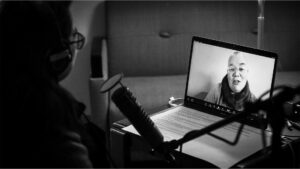
Petra explains the relationship between disabilities and pain, and how she uses Eco Soma to help.
Sueann: Wow. So to live well with pain, you find those spaces in between and you meditate and think deeply about the layering of those sensations. Why not just suppress the pain? Why think so deeply about it?
Petra: I just don’t think it’s very possible, and it depends on what kind of pain you have, but when I’m in pain, I cannot suppress it. It’s also a part of who I am. It makes me who I am in the world, which is why I think it’s so interesting to write about the sensations of a particular disabled person in the world. That the kind of impetus behind Eco Soma – writing from a disability culture perspective. It shows what it means to be in the world as someone who often has to pay a lot more attention to my embodied being than someone who doesn’t experience pain does, right? So there’s a request, a requirement to be aware of self and world in a way that someone who lives in a pain free life doesn’t have to.
Sueann: While we’re on the pain subject, I wanna ask about religion, specifically Christianity and the salve of heaven as a way to be free of pain? Cause as I’ve gotten older, I’ve seen heaven as more of an excuse not to work through problems or to try to work with your pain. But they always say you can’t have heaven on earth and so why try? But you write and point out that pointing to an elsewhere for a reward is a powerful mechanism of control. So when we’re being told, “Yes, you are in pain, you’re not fully able bodied, but in heaven you’ll have a whole body, you won’t be in pain. So, there, there.” Can you explain that more and about the control of that?
Petra: Right, yeah. Well, if everybody were to rise up and ask for accommodations in this life, which could just include a ramp or working from home when you’re told that you have to come in, in the middle of a COVID crisis, right? So if that’s all it takes to make you feel, experience some of the joy that we’re just talking about, then being asked to wait for earthly somatic bodily delights for some kind of afterlife is a form of control. It is trying to create to keep things the way they are, like nine-to-five workplaces, like places with lots of stairs. I mean really there are often solutions. They will not take away all pain. Disability is not something that you can just legislate out of the world with ramps and with rules that shift things slightly here and there. There will always be pain. But I find it very problematic to point to an afterlife when there’s so many ways in which we could be much kinder towards one another.
Understanding Disabled People’s Perspective:
Sueann: So I’m gonna flesh out this question with you cause this involves technology. And I’ve heard people being very enthusiastic that this technology is going to enable those who are disabled to participate in our world. But for me, I think it’s a virtual world, but your physical being is still here and [this] world needs work on too. So it’s complicated to me. I’m excited, but also, yeah, there’s more work to be done.
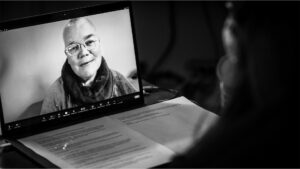
Petra chats with Sueann via Zoom.
Petra: Yeah I love how you talk about that. You know, that complexity is something I feel too. So in some ways it was very exciting to see the whole world switch into the communication channels that disabled people have been using forever. An activist called Mia Mingus talks about access intimacy. And as someone who uses a scooter, I often cannot get into people’s private homes because many people have lots of stairs and I can’t get in. So in March 2020, I began seeing people’s home spaces and it was fabulous. I mean I’ve never seen so many private home spaces than I have on Zoom meetings. So that was quite a delight to me. And I think to many disabled people who are indeed – I mean, I’m in no way home bound and many people are, but I’m not. I do, my home is accessible and I can drive a car, but I can’t get into the private spaces of people who walk stairs. So that was pretty delicious.
Sueann: What do you want able-bodied people to understand?
Petra: I would love able-bodied people to understand that there is disability cultural work out there and that disabled people can create rich and powerful art and culture works and that they can be part of disseminating this kind of work. So I encourage people to find out about disabled artists in their own locality and beyond, to share that with disabled people that they know because many disabled people are often quite isolated. We don’t teach disability culture in schools. It’s very hard to connect yourself. Many disabled people speak about a form of coming out when they actually finally meet a group of people who understand disability as a positive thing. It’s a bit like queer world, right? We come to queer families, to queer love, the same way that we come to disability culture worlds. We usually come to that later in life. It’s not something we were born into. So reach out, help people to connect to disability arts and culture out there.
Sueann: Beautiful. And what would you want people with disabilities to understand?
Petra: That you’re beautiful. That your way of being is rich and gorgeous. That people can learn from you – that people can learn from you different ways of being in this world. And that is an incredibly enriching part of what it means to be human. And that we need these different perspectives of being in the world in order to create a more just culture for all of us.
*Question and responses were edited for length and clarity.
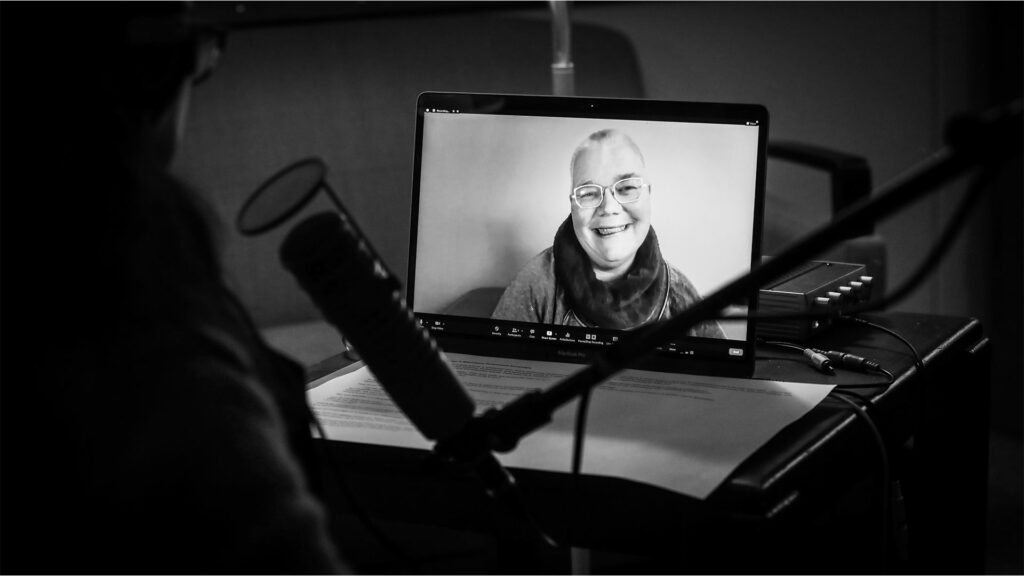
Related Stories:
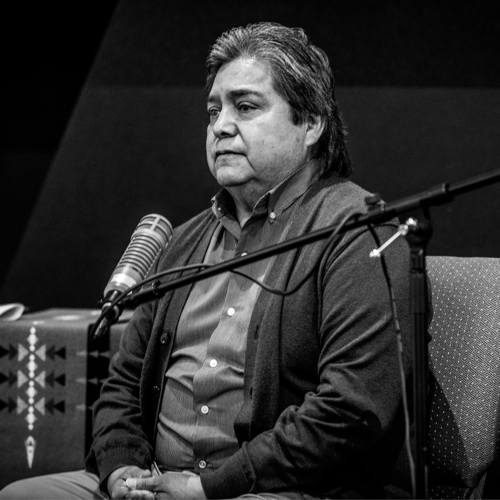
Captive Returns Home: The Story Of Wetxuuwíitin – ‘Traverse Talks’ Episode 42 – With Chairman Samuel Penney
Photo of Sam Penney recording Traverse Talks at the Nez Perce National Historic Park on March 10, 2022. Imagine a stranger took your family’s heirlooms and then offered you an
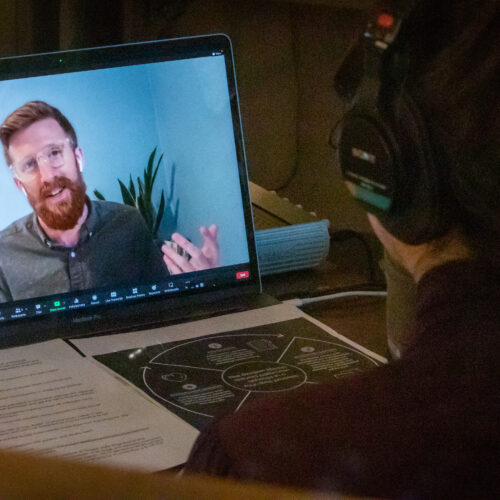
Psilocybin: Psychology, Policy and Possibilities – ‘Traverse Talks’ Episode 41 – With Sam Chapman
Sueann Ramella interviews Sam Chapman virtually on April 19, 2022. What do you really know about psilocybin, commonly known as magic mushrooms? Research on the substance has lagged behind in
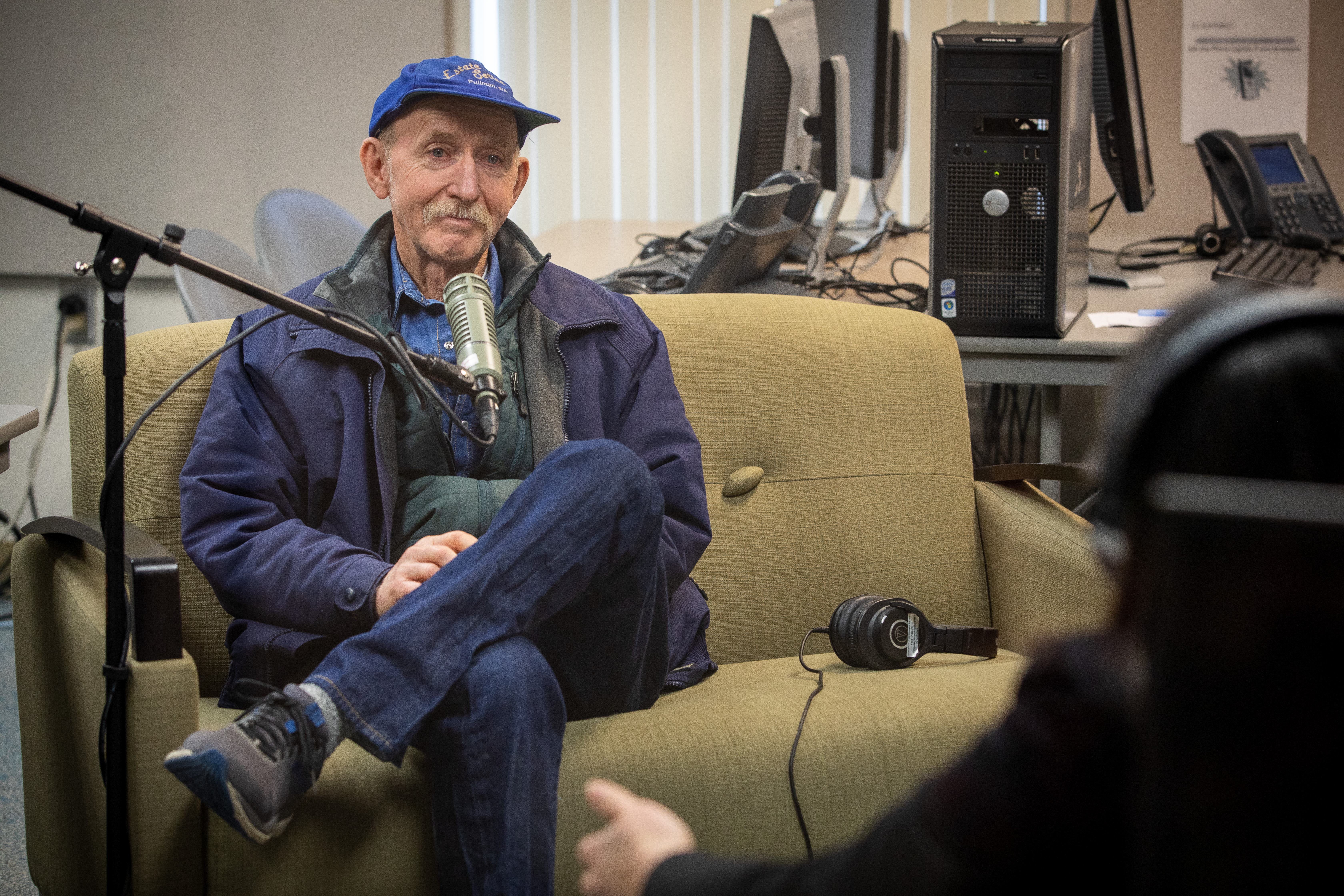
You Inherited A House Full Of Stuff. What’s Next? ‘Traverse Talks’ Episode 38 – With Estate Services Owner Rich Old
Rich Old recording this episode of Traverse Talks on March 3rd, 2022. Grieving the loss of a loved one is already hard enough. To make matters worse, many people have

